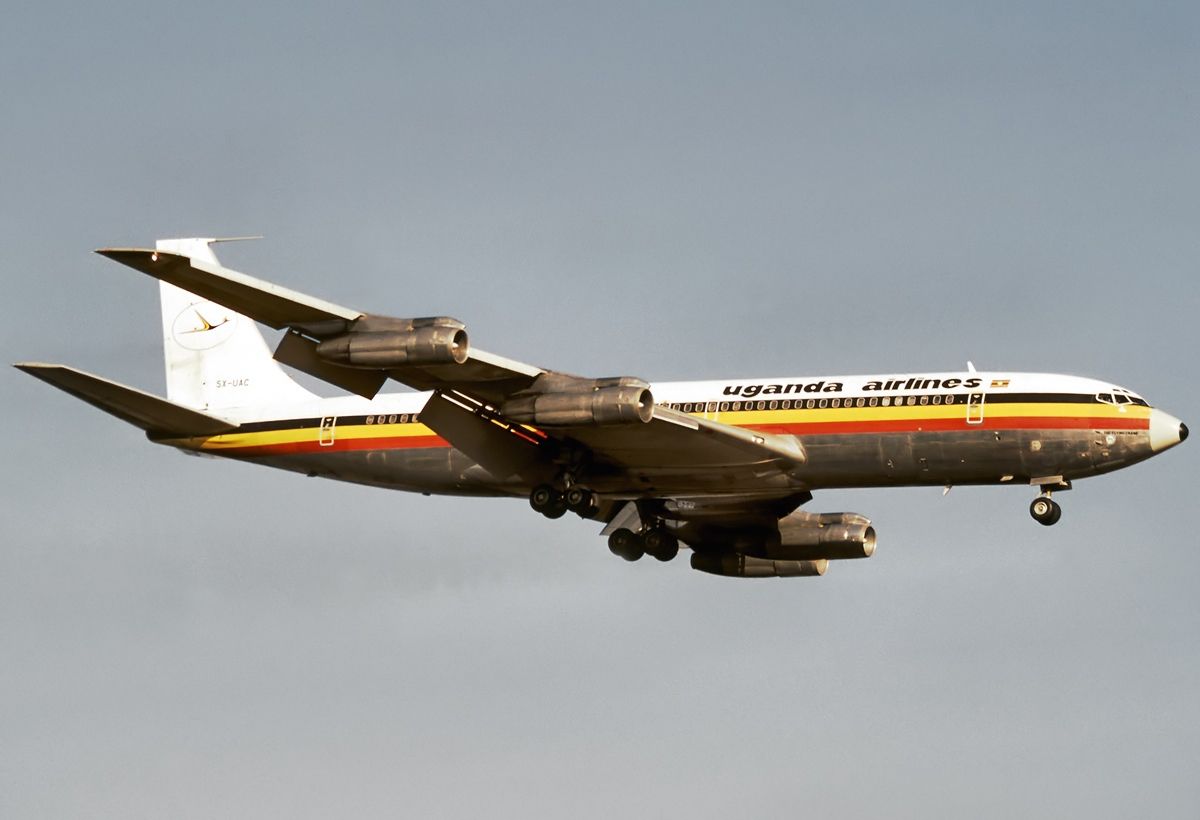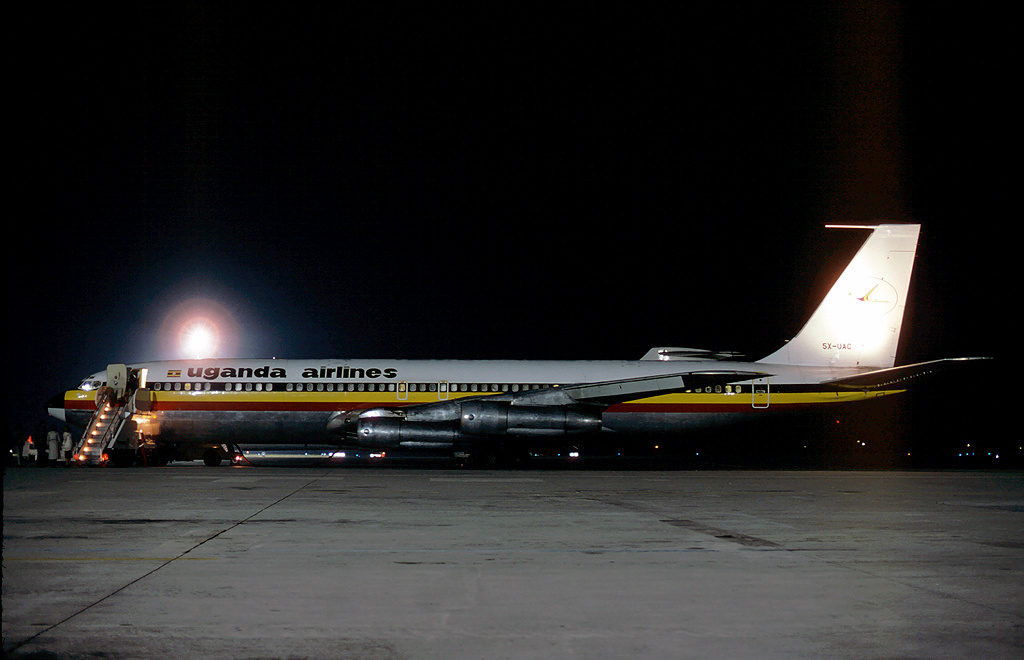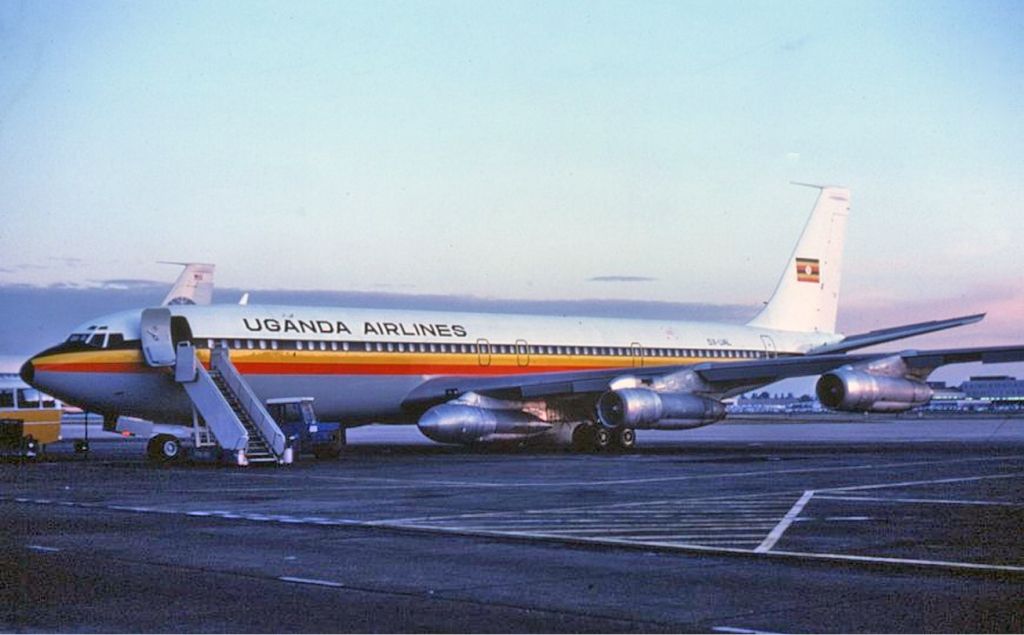34 years ago today, on October 17th, 1988, a Boeing 707 operating Uganda Airlines flight 775 crashed while approaching the Italian capital city of Rome. Various factors were found to have been at play in the accident, which saw the quadjet come down well short of the runway. Let's take a look back in time to see what happened.
The flight and aircraft involved
Uganda Airlines flight 775 originated at London Gatwick Airport (LGW). Its destination was Entebbe International (EBB), which served as Uganda Airlines' main hub, and is the only international airport in Uganda. It is worth noting, at this juncture, that the Uganda Airlines whose Boeing 707 crashed in Rome is a separate entity to the Uganda Airlines of today. Indeed, this carrier only started flying in 2019.
The reason for the flight's attempted landing in Rome was the fact that it had a scheduled stopover in the Italian capital, at Leonardo da Vinci-Fiumicino Airport (FCO). According to the Aviation Safety Network, it left Gatwick at 21:10 local time.
The aircraft operating the flight was a Boeing 707-300C registered as 5X-UBC.
According to data from ATDB.aero, this quadjet was just over 20 years old at the time, having entered service with Qantas in September 1968. It had been at Uganda Airlines for seven years, having joined the carrier in October 1981. There were 45 passengers and seven crew members onboard the aircraft.
Get the latest aviation news straight to your inbox: Sign up for our newsletters today.
Disastrous approach
Having left London Gatwick Airport on the evening of October 16th, 1988, it was just after midnight on October 17th when Uganda Airlines flight 775 was descending and approaching Rome. Indeed, at 00:05 local time, the flight made a missed approach of Fiumicino's runway 16L. This was due to poor visibility.
A lack of visibility also prompted the flight's second landing attempt, using runway 25, to be abandoned. This prompted the crew to instead request radar vectoring for an approach to runway 34L. This initially went well, with the 707 intercepting the localizer at 00:28. However, it then descended below the minimum descent altitude.
This happened even though the crew were yet to identify the marking of their chosen runway. The aircraft's Ground Proximity Warning System (GPWS) alarm sounded, but, sadly, it was too late. At 00:30, the aircraft impacted a house some 1,300 meters short of the runway. After hitting another building, it broke apart and caught fire, with 26 passengers and all seven crew perishing.
Love aviation history? Discover more of our stories here!
The factors at play
An investigation found that several aspects had factored in the crash of Uganda Airlines flight 775. The main probable cause was determined to have been a lack of adequate preparation, on the crew's part, for a non-precision approach at Fiumicino. Their descent below the minimum descent altitude (MDA) also contributed.
Possible other contributing factors included crew fatigue, on a mental and physical level, given the challenges faced in the previous two missed approaches under difficult conditions. Furthermore, the crew were said to have paid insufficient attention to instrument readings. That being said, the configuration of the altitude instruments reportedly prevented the MDA warning from sounding.
Sources: ATDB.aero, Aviation Safety Network



